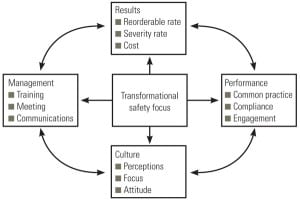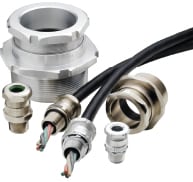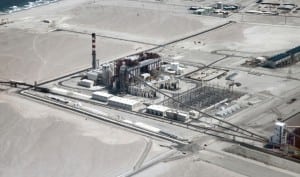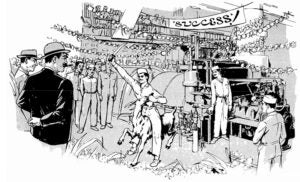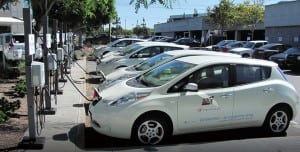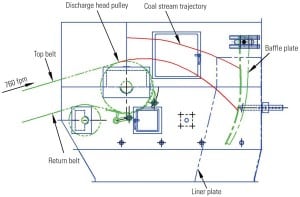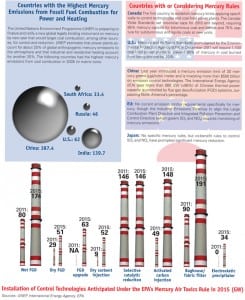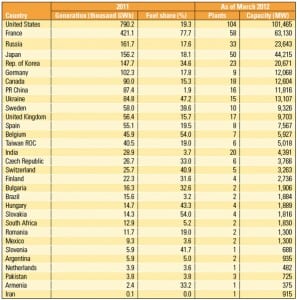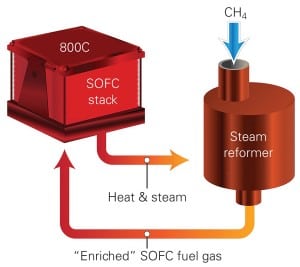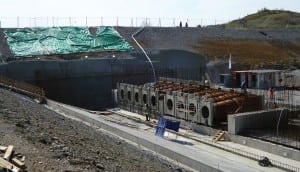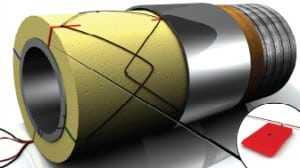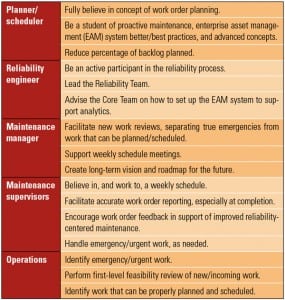In This Issue
-
Business
Safety Measurement: Culture Shaping or Failure Avoidance?
“It is a new month. I want you all to work very hard to fail less than previous months. I’ll be measuring. Failures will not be tolerated. Anyone caught doing so will be disciplined by his or her peers and/or leadership.”
-
News
Flowmeter for Utility Gases
Endress+Hauser released the Proline t-mass 150 thermal mass flowmeter for measuring gases such as compressed air, nitrogen, carbon dioxide, and argon. The flowmeter measures mass flow, gas temperature, free air delivery, and corrected volume—all without the need for pressure or temperature compensation. The t-mass 150, with its high turndown of 100:1, can reliably measure small […]
-
Business
Women in Power Event Provides Networking Opportunities
From success stories to war stories, members of the Women in Power Panel Discussion shared their insights about working as women professionals in the U.S. electric power industry at the 2012 ELECTRIC POWER Conference in Baltimore on May 16. The gathering featured lively exchanges between panelists and a large number of attendees (Figure 4). The panel discussion was organized by co-chairs Angela Neville, JD, senior editor of POWER, and Colleen Campbell, business development director at CH2M HILL.
-
News
Comprehensive Spectrophotometer
Hach Co.’s new DR 6000UV-Vis spectrophotometer was designed to fulfill any water testing needs using one spectrophotometer. It is equipped with RFID technology, integrated QA software, and more than 250 testing methods and guided procedures. The instrument is programmed to take absorbance readings of a single sample at different wavelengths or over a specific period […]
-
Legal & Regulatory
Proposed Cooling Water Rule’s Ripple Effects
The U.S. Environmental Protection Agency (EPA) has a long history of making waves with the electric power industry because of its efforts to regulate the way thermal power plants construct and operate their cooling water intake structures (CWIS). These structures divert billions of gallons of water into power plants’ cooling systems and can injure or kill billions of aquatic organisms.
-
Commentary
Wind Energy Blown Away by Natural Gas
The environmental push for renewables and mandates to force them into existence are rightly facing some serious headwinds. The American Renewable Energy Production Tax Credit Extension Act of 2011 foundered in Congress, and more states are experiencing significant power rate increases to cover renewable energy production costs. While renewables are generally not ready for prime time in large quantity on today’s power grid, that doesn’t mean environment concerns ought to be trashed, especially when a more effective off-the-shelf solution is available.
-
O&M
Plant of the Year: AES Gener’s Angamos Power Plant Earns POWER’s Highest Honor
AES Gener recently completed construction of twin coal-fired, 260-MW units in the electricity-starved desert of northern Chile that may serve as models for future hybrid-fossil plant designs. For meeting an aggressive construction schedule, integrating a 20-MW battery energy storage system, embracing desalination, using the first-of-its-kind seawater cooling tower in South America, and employing innovative financing methods, the AES Gener Angamos plant has earned POWER’s 2012 Plant of the Year Award.
-
Marmaduke
Marmy’s One-Squirt Celebration
Steve Elonka began chronicling the exploits of Marmaduke Surfaceblow—a six-foot-four marine engineer with a steel brush mustache and a foghorn voice—in POWER in 1948, when Marmy raised the wooden mast of the SS Asia Sun with the help of two cobras and a case of Sandpaper Gin. Marmy’s simple solutions to seemingly intractable plant problems remain timeless. This Classic Marmaduke story, published more than 50 years ago, reminds us that an overhaul or startup may not go as planned, but it can still have a happy ending.
-
Waste to Energy
Marmaduke Award: Combined Solar Technologies’ Hybrid Plant: Using Wastewater and Olive Pits to Produce Clean Water and Clean Energy
Combined Solar Technologies (CST) has designed, built, owns, and operates a water purification system located at the Musco Family Olive Co. facility in Tracy, Calif., that burns olive pits to purify highly saline wastewater through a distillation process while also producing electric power. For its pioneering approach, CST is the winner of POWER’s 2012 Marmaduke Award for excellence in plant problem-solving. The award is named for Marmaduke Surfaceblow, the fictional marine engineer and plant troubleshooter par excellence, whose exploits were chronicled in POWER beginning in 1948.
-
Solar
Smart Grid Award: Customers Motivate San Diego Gas & Electric’s All-Inclusive Smart Grid Vision
“If you build it, they will come” has proven a risky strategy for some smart grid projects. One of California’s largest investor-owned utilities faced the opposite challenge—customers whose behaviors necessitated a smarter grid. Customer involvement in and support for smart grid plans is a major reason SDG&E’s smart grid efforts continue to garner accolades, including the 2012 POWER Smart Grid Award.
-
O&M
Flow Control Chutes Reduce Fugitive Coal Dust
Moving thousands of tons of coal per hour at high speeds through a complex handling system is a main cause of airborne coal dust in a coal-fired plant. Depending upon the coal’s characteristics, that dust can become explosive when its concentration reaches 80 g/m3 and, hence, a threat to life and property. The best option is to stop the dust from becoming airborne in the first place.
-
Coal
New Environmental Rules Keep Pressure on Coal-Fired Generation
New U.S. Environmental Protection Agency regulations affecting the nation’s coal power plants are routinely in the national news. The latest proposed rule focuses on the release of carbon dioxide into the atmosphere. With a substantial amount of coal generation expected to be shut down (up to 40 GW to 50 GW in the coming years by some accounts), the new regulations are increasing the likelihood that this lost capacity will not be replaced by new coal generation.
-
Coal
Tactical Advantage
A three-judge panel of the U.S. Court of Appeals for the D.C. Circuit on June 26 unanimously rejected all pending legal challenges against the U.S. Environmental Protection Agency’s (EPA’s) interpretation of the Clean Air Act (CAA) that allows the agency to regulate greenhouse gases (GHGs). What is the EPA’s future strategy in its war on coal?
-
Nuclear
Small Is the New Big: The B&W Small Modular Reactor
Small reactors are big news, particularly the 180-MWe Generation III++ Babcock & Wilcox mPower small modular reactor (SMR). This SMR has all the features of its larger cousins, but the entire reactor and nuclear steam supply system are incorporated into one reactor vessel, all about the size of single full-size pressurized water reactor steam generator. Expect the first mPower—and probably the first SMR—to enter service before 2022.
-
-
Nuclear
2011 Nuclear Industry Scorecard
The world nuclear industry experienced few substantial changes in performance metrics for 2011—beyond Japan, that is. In the aftermath of Fukushima, the once–world leading Japanese nuclear industry fell to the bottom of the rankings, perhaps for good.
-
Hydro
Major Developments for Solid Oxide Fuel Cells
Solid oxide fuel cells (SOFCs), which oxidize a fuel to produce electricity, have received much attention of late for the technology’s myriad benefits, including high efficiency, long-term stability, fuel flexibility, and low carbon emissions—all at a relatively low cost.
-
Nuclear
Too Dumb to Meter, Part 3
As the book title Too Dumb to Meter: Follies, Fiascoes, Dead Ends, and Duds on the U.S. Road to Atomic Energy implies, nuclear power has traveled a rough road. In this POWER exclusive, we present the third chapter, “Micro-Mismanagement by Committee.” During the frenzy to manage atomic power after World War II, Congress created an executive branch agency that threatened to be too independent, too powerful, and too isolated from the rest of government. Compounding their errors, perhaps in recognition of what they had created, the solons also developed a way to insert their own power into the action. This proved to be a major mistake—blurring the lines between executive and legislative authority—causing no end of problems for the nation’s nascent atomic energy venture.
-
Wind
The Age of the Mammoth Wind Turbine Blade
Siemens Energy in June announced it had produced the first batch of its new B75 Quantum wind turbine rotor blades, fiberglass components 75 meters (m) in length that were cast in one piece (Figure 3). The blades were manufactured to be installed this fall on Siemens’ second prototype of the German firm’s SWT-6.0 6-MW offshore […]
-
News
Non-Discharging Synthetic Media for Pulse Systems
Camfil Farr Power Systems added two new products for dusty environments to its Campulse product line: Campulse GTC and GTD. Both have new, non-discharging fiber media, which are sturdy, durable, and offer high dust-holding capacity. The Campulse GTC’s smooth synthetic fibers offer low resistance to airflow and maintain a low pressure drop throughout the filter […]
-
Hydro
Tubular Turbine Hydropower Plant Comes Online
Albania this June inaugurated its first major hydropower project since the early 1980s, bringing online Ashta I, the first of two run-of-river plants with a combined capacity of 53 MW. At the inauguration ceremony, Albania’s Prime Minister Sali Berisha called the plant “a novelty” because it is the largest in the world to use advanced tubular turbines technology.
-
News
Tray Cable Connectors
Appleton, a manufacturer of products for hazardous location electrical systems, now offers a versatile line of tray cable connectors engineered for use with TC, ITC, PLTC, and other commonly used types of tray cable. Key to the success of the new connectors is a compensating displacement seal that provides ingress protection to NEMA 4X and […]
-
Gas
New Gas-Fired Technology Gains Backers
A new gas-fired power generation technology that uses an oxyfuel, high-pressure, supercritical carbon dioxide cycle and produces pipeline-ready carbon dioxide for sequestration or use in enhanced oil recovery (EOR), without reducing plant efficiency, garnered the interest of three new partners in June.
-
News
Sensors for Detecting Corrosion Under Insulation
Rohrback Cosasco released three types of Cosasco corrosion under insulation (CUI) corrosion sensors for detecting corrosion under insulation: continuous insulated braid “corrosion fuse” wire (Type 1), inserted “corrosion fuse” probe array (Type 2), and the CUI Corrosometer Probe (Type 3). The three techniques offer direct corrosion detection and a much lower cost per monitoring point […]
-
Business
POWER Digest (August 2012)
FP&L to Increase Output at Turkey Point. Florida Power & Light (FP&L) on June 19 received approval from the Nuclear Regulatory Commission to increase the power generating capacity of Turkey Point Nuclear Generating Units 3 and 4 by 15%. The power uprate for the pressurized water reactors will increase each unit’s capacity from approximately 700 […]
-
News
Rotary Screw Air Compressor
Ingersoll Rand is offering a newly improved single-phase control scheme for its 5 and 7.5 versions of the small UP6 5-15c line of air compressors. It has added a run-on timer and load/unload and blowdown solenoids to improve the reliability and performance of single-phase units in general industrial applications up to 28 cfm. The company […]
-
O&M
Breaking the Cycle of Reactive Maintenance
Nobody can schedule unplanned events that will affect power generation. And no one wants to start a day expecting an emergency to occur. But when critical systems fail in the power supply system, it’s time to respond. That’s a given of power plant maintenance.
-
News
Compact Electric Pump
A new compact electric pump designed for bolt tensioning applications in the wind turbine industry is now available from specialist bolt tensioner manufacturer Boltight Ltd. The standalone power pack is lightweight (19.5 kg) and portable, as the pump, reservoir, and motor are combined into one easily handled package. The 0.75-kW rated pump is driven by a 220-240 V single-phase electric […]


